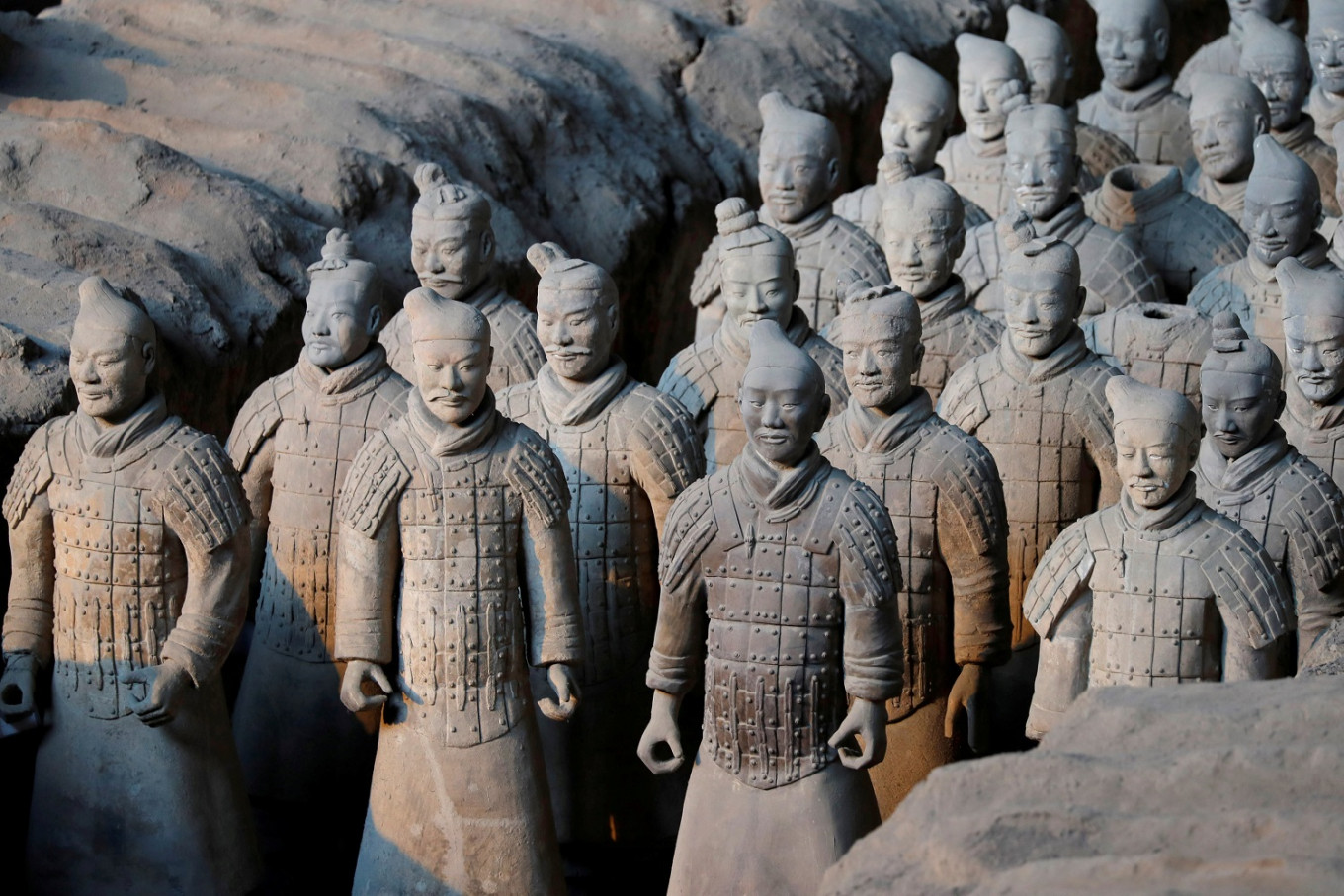Popular Reads
Top Results
Can't find what you're looking for?
View all search resultsPopular Reads
Top Results
Can't find what you're looking for?
View all search resultsScientists solve mystery of pristine weapons of China's Terracotta Warriors
For decades, scientists have been perplexed by the marvelous preservation of bronze weapons associated with China's famed Terracotta Warriors.
Change text size
Gift Premium Articles
to Anyone
F
or decades, scientists have been perplexed by the marvelous preservation of bronze weapons associated with China's famed Terracotta Warriors, retaining shiny, almost pristine surfaces and sharp blades after being buried for more than two millennia.
Research by an international team of scientists published on Thursday may solve the mystery while putting to rest an intriguing hypothesis: that ancient Chinese artisans employed an unexpectedly advanced preservation method using the metal chromium.
The fine preservation of weapons including swords, lances and halberds was due to serendipity - factors such as the bronze's high tin content and favorable soil composition, the scientists decided after examining 464 bronze weapons and parts.
Chromium found on the bronze surfaces, they determined, was simply contamination from chromium-rich lacquer applied by the artisans to the terracotta figures and weapons parts. Chromium played no role in their preservation.
The Terracotta Army consists of thousands of life-sized ceramic warriors and horses alongside bronze chariots and weapons, part of the vast 3rd century BC mausoleum near the city of Xi'an for Qin Shi Huang, first emperor of a unified China. Found in 1974, it represents one of the 20th century's greatest archaeological discoveries.
Read also: China's Terracotta Warriors propel Liverpool museum to England's most visited outside London
Scientific analyses almost four decades ago detected chromium on the surface of some of the weapons, spurring the hypothesis that the weapon-makers used a chromium-based treatment to prevent corrosion.
Chromium-conversion coating, a technology discovered in the early 20th century, is used to treat metals to render them more corrosion resistant. It involves dipping metal in a solution containing chromium salts. A chromium oxide layer is deposited on the metal's surface, providing a barrier against rust.
"The lacquer was applied to the Terracotta Army as a primer before they were painted with colors, and we think it's quite likely it was also applied to the now-decayed wooden parts such as handles and shafts," said University of Cambridge archaeological scientist Marcos Martinón-Torres, who led the study published in the journal Scientific Reports.
Ancient bronzes often have poor states of preservation, with porous, pitted surfaces showing green or dark colors.
"In essence, we show that, yes, the Terracotta Army weapons generally show a very good state of preservation, but there is currently no indication that this is anything other than the result of chance," added Martinón-Torres, who participated in the research while at University College London and in collaboration with the Terracotta Army Museum.











